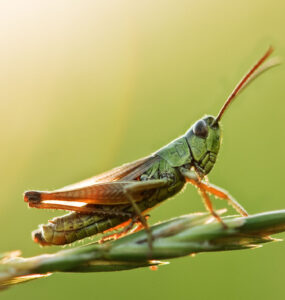What is Killing Our Bees
by Rob Sproule
It’s impossibly to overstate how extraordinary bees are or how vital they are to our future as a species. Worldwide, about 200,000 species of bees pollinate 80% of all flowering plants. Without bees, grocery store produce sections would almost disappear, with everything from apples to beans to coffee vanishing from the shelves.
Our bees are disappearing at an alarming rate, and finding out why has become a race against time. While there are many dominant theories, recent research has special attention to two of them.
“Neonic” Pesticides
In the past 10 years, an estimated 40% of US honeybee colonies have disappeared due to Colony Collapse Disorder (CCD). CCD is when bees become disoriented and either can’t find their way back to their hive and die searching or find their way back and die at home.
For years, scientists have searched for the root cause of CCD, with theories ranging from pesticides to parasites to cell phone signals. A recent, major study out of Harvard University has found a smoking gun: a new class of neuro-toxin pesticides called neonicotinoids, or neonics for short.
Neonics enter young plants’ system either via the seed being treated or a spray application; many of Canada’s largest crops are planted with neonic-treated seed. It can be appealing to farmers’ and industrial plant growers because it reduces the need, and therefore the cost, of future pesticide treatments. However, it turns the affecting plant into a death-trap for visiting bees.
Bees exposed to neonics start to shake uncontrollably and suffer mental breakdown. The condition has been compared to an extreme form of Parkinson’s and Alzheimer’s combined.
As consumers, we can help by applying pressure on retailers to not sell neonic-treated bedding plants. If you don’t buy your spring plants locally grown, ask if the plants have been treated neonicotinoid pesticides. Although you’ll get a lot of blank stares, awareness is growing. Some major independent Garden Centres in the US are already promoting that they do not sell neonic-treated annuals, and in 2013 the EU instituted a 2 year ban on their use.
As gardeners, we can help by reducing our reliance on pesticides. Please consider spraying anything in your yard to be a last resort, and never spray while trees are in bloom (the end of May).
Varroa Mites
The aptly named Varroa destructor mite is a major cause of CCD. Introduced into Canada in the late 1980s, it destroys colonies by sucking drones’ blood and weakening them to the point of disease or deformity.
Varroa mites travel quickly from hive to hive and, if not treated early, tend to be fatal to the colony. Although there are effective controls that beekeepers can take if the mites are detected early, early detection is difficult.
How We Can Help
We can help bee populations, in our own way, by providing them with ample food and flowers to pollinate. As we think about how we can work towards banning chemicals like neonics, it’s important to remember things that we can do today, and in our own yards, to help bees out.
Bees prefer sunny areas that are sheltered from the wind. The middle of a yard that is surrounded by trees and houses is the ideal place for a bee-friendly flower bed.
Plant your bee-friendly plants in clusters of at least 3 plants. A bee will always buzz towards a group of plants over a single one. Try to plant a variety of flowers and make sure to include different shapes. Different species of bees are attracted to different shapes of flowers.
Luckily, bees are attracted to the same colourful, vibrant flowers that you’re attracted to. They love bright colours, so don’t be bashful about planting flowers that steal the show!
Bees love local perennials much more than exotic annuals. Some of the best plants to attract them are Black-Eyed Susans, Lilacs, Echinacea, Rhododendrons, and Sunflowers. Try to plant groupings of perennials that will bloom in stages throughout the summer.
















